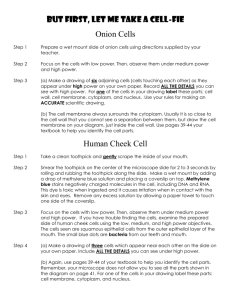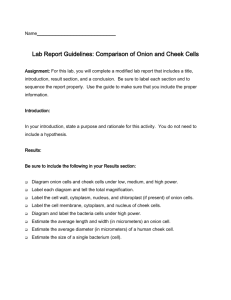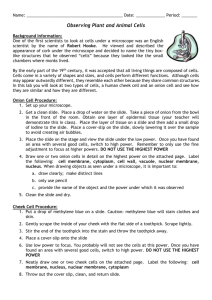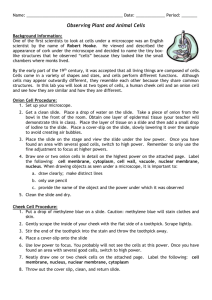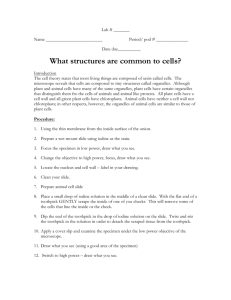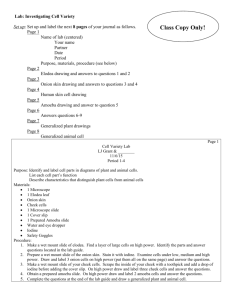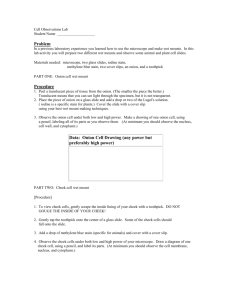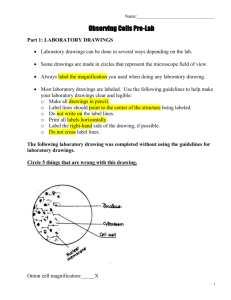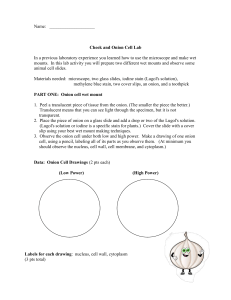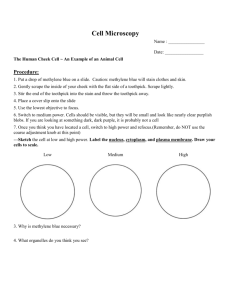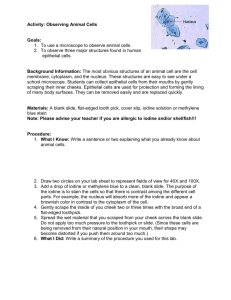MAKEUP- Cells and Microscopes Lab
advertisement
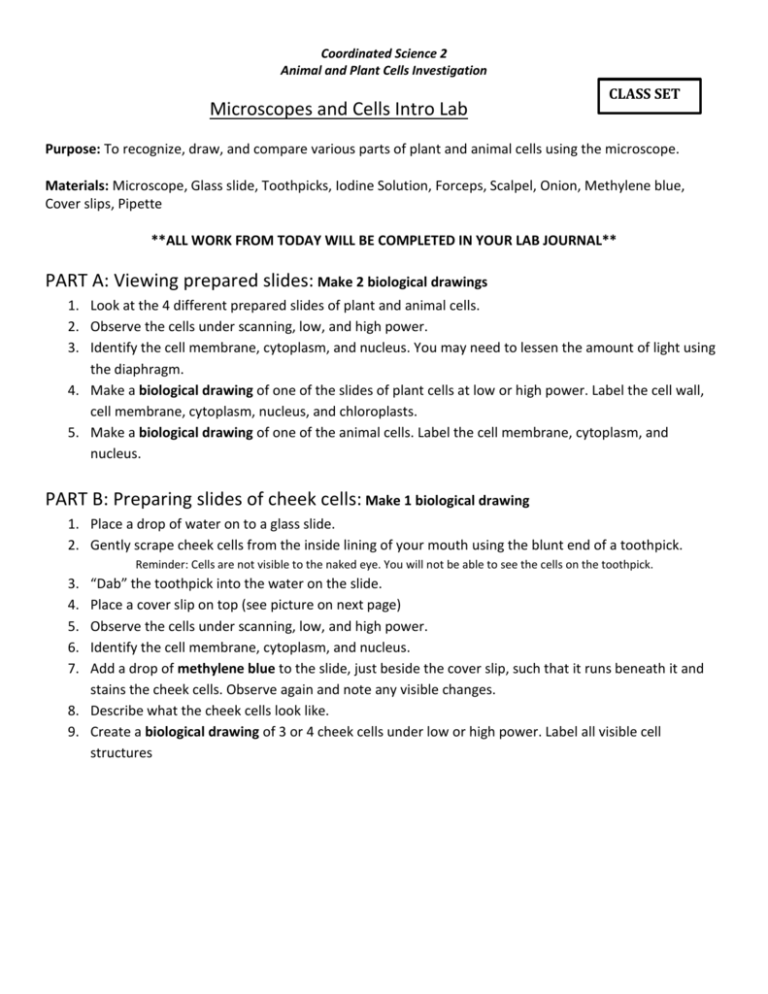
Coordinated Science 2 Animal and Plant Cells Investigation Microscopes and Cells Intro Lab CLASS SET Purpose: To recognize, draw, and compare various parts of plant and animal cells using the microscope. Materials: Microscope, Glass slide, Toothpicks, Iodine Solution, Forceps, Scalpel, Onion, Methylene blue, Cover slips, Pipette **ALL WORK FROM TODAY WILL BE COMPLETED IN YOUR LAB JOURNAL** PART A: Viewing prepared slides: Make 2 biological drawings 1. Look at the 4 different prepared slides of plant and animal cells. 2. Observe the cells under scanning, low, and high power. 3. Identify the cell membrane, cytoplasm, and nucleus. You may need to lessen the amount of light using the diaphragm. 4. Make a biological drawing of one of the slides of plant cells at low or high power. Label the cell wall, cell membrane, cytoplasm, nucleus, and chloroplasts. 5. Make a biological drawing of one of the animal cells. Label the cell membrane, cytoplasm, and nucleus. PART B: Preparing slides of cheek cells: Make 1 biological drawing 1. Place a drop of water on to a glass slide. 2. Gently scrape cheek cells from the inside lining of your mouth using the blunt end of a toothpick. Reminder: Cells are not visible to the naked eye. You will not be able to see the cells on the toothpick. 3. 4. 5. 6. 7. “Dab” the toothpick into the water on the slide. Place a cover slip on top (see picture on next page) Observe the cells under scanning, low, and high power. Identify the cell membrane, cytoplasm, and nucleus. Add a drop of methylene blue to the slide, just beside the cover slip, such that it runs beneath it and stains the cheek cells. Observe again and note any visible changes. 8. Describe what the cheek cells look like. 9. Create a biological drawing of 3 or 4 cheek cells under low or high power. Label all visible cell structures Coordinated Science 2 Animal and Plant Cells Investigation PART C: Preparing Slides of Onion Cells: Make 1 biological drawing 1. Place a drop of water on to a glass slide. 2. Take a small piece of one layer from the onion, and cut a square with sides of about 0.5 cm. 3. Carefully peel the very thin, paper-like skin from the inner surface of this square. Place it in the water drop, flatten it if necessary, and then put on a coverslip. Clean your slide. 4. Observe the cells under scanning, low, and high power. 5. Identify the cell wall, cytoplasm, nucleus, and vacuole. You may need to lessen the amount of light using the diaphragm. 6. Add a drop of iodine to the slide, just beside the cover slip, such that it runs beneath it and stains the cheek cells. Observe again and note any visible changes. 7. Create a biological drawing of 3 or 4 onion cells under low or high power. Label all visible cell structures. --------------------At this point, you should have FOUR biological drawings in your journal------------------------ PART D: Discussion Questions: Answer the following questions in your journal 1. When viewing the cheek cells, which part of the cell stained the darkest blue? 2. Is the cell membrane permeable or impermeable to methylene blue? Explain your answer, 3. Name two structures that you can see in the onion cells but could not see in the cheek cells. 4. Most plant cells have chloroplasts, but the onion cells we viewed do not. Suggest a reason for this. 5. Iodine solution turns blue-black in the presence of starch. Did any of the onion cells contain starch?
